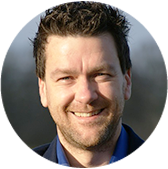The brain is the most complex and vital organ in the human body. It controls everything we do, from our thoughts and emotions to our physical movements and sensations. It operates through a series of electrical impulses called brainwaves.
Brainwaves are the result of the synchronized activity of millions of neurons in the brain. These waves are measured in cycles per second, or hertz (Hz), and can be classified into different categories based on their frequency and amplitude. There are five main types of brainwaves: gamma, beta, alpha, theta, and delta. Brainwave activity can be measured and changed in multiple ways using a therapy technique known as neurofeedback.
By understanding brainwaves, we can gain insights into how the brain is functioning and develop targeted therapies to improve cognitive function and overall well-being. At NeuroZone, Erin Badour, CCC, SLP measures brainwave activity using qEEG Brain Mapping and provides neurofeedback therapy to improve cognitive function in a range of conditions. Contact your nearest location or fill in an online inquiry form for more details.
Playa del Rey: (310) 821-3640
Santa Monica: (310) 821-3640
Redondo Beach: (424) 247-8193
Read more on the NeuroZone blog
About Brain Waves
Scientists estimate that there are around 100 billion cells in the human brain. (1) These cells communicate with each other chemically and electrically. Brainwaves are the electrical patterns that our brains create as we think, feel, and perceive the world around us. These waves vary in frequency and amplitude depending on our state of mind, emotions, and overall brain function.
There are different types of brainwaves categorized according to their frequency range:
- Delta Waves (0.5-4 Hz)
- Theta Waves (4-8 Hz)
- Alpha Waves (8-13 Hz)
- Beta Waves (14-30 Hz)
- Gamma Waves (30-100 Hz)
Types of Brain Wave
Delta Waves
Delta waves are the slowest brain waves of the five, with frequencies below 4 Hz. They are associated with:
- Deep Sleep
- Unconsciousness
- Rest
- Regeneration
Delta wave activity is always present in the brain, however, dominant delta waves mean the person is likely in a deep state of unconsciousness.
Theta Waves
Theta waves are related to:
- Meditation
- Memory Retrieval
- Creativity
- Reduced Anxiety
Theta waves have frequencies between 4 and 7 Hz and are present during the “twilight period” before sleep, during sleep and during deep meditation. People will often go into a theta state during hypnosis, as this makes them more suggestible and open to persuasion. It is also the state most commonly experienced by young children. (1)
Alpha Waves
Alpha waves are in the middle range in terms of their frequency. They are associated with:
- Relaxation
- Meditation
- Creativity
- Quiet Readiness
Alpha wave activity is present when there is little audio or visual stimulation. In fact, when the eyes are closed, alpha wave activity is expected to increase significantly in a typical, healthy brain. (1)
Beta Waves
Beta waves are the faster brainwaves of focused thought. They are linked to:
- Mental Focus
- Thinking/Processing
- Planning
- Ruminating
Beta waves have frequencies between 14 and 30 Hz and are present during wakefulness and concentration.
Gamma Waves
Gamma waves are associated with:
- Higher levels of consciousness
- Higher cognitive processing
- Memory
- Perception
Gamma waves are the fastest brainwaves, with frequencies above 30 Hz, and are associated with higher cognitive functions such as memory and perception. They are typically represented in “effortless insight” or so-called “a-ha” moments. (1)
What is Alpha-Theta Treatment for anxiety? Find out here.
Neurofeedback Terms
qEEG Brain Mapping
Brain mapping is a process that involves recording brain wave activity from different areas of the brain using EEG technology. This information can be used to identify areas of the brain that may be functioning abnormally and target those areas for treatment.
Neurofeedback
Neurofeedback is a technique used to train the brain to regulate its own activity by providing real-time feedback about the brainwaves. Brain training activities produce positive or negative feedback to trigger desirable brain activities. (2) They use qEEG technology to measure brainwave activity and provide real-time feedback to the individual in order to help them learn how to control their own brain activity. These techniques have been found to be effective in treating ADHD, depression, anxiety, and other conditions.
Neuroplasticity
Neuroplasticity refers to the brain’s ability to change and adapt in response to new experiences or stimuli. Brain training games and supplements have also been developed to improve cognitive function and support brain health.
Entrainment
Brainwave entrainment, also known as brainwave synchronization, is a method of stimulating the brain to produce specific brainwave patterns using external stimuli such as binaural beats, monaural beats, or isochronic tones. These methods have been found to be effective in improving:
- Mental Clarity
- Focus
- Concentration
- Memory
- Sleep Quality
- Stress Reduction
- Anxiety Relief
- Depression Treatment
Please see our website for a full list of the disorders we treat.
If you’re ready to learn more about your brainwaves and how they affect your health and wellbeing, contact NeuroZone today at (310) 821-3640 to schedule your personal consultation with Badour. We look forward to helping you achieve optimal brain function!
Benefits of Neurofeedback
At NeuroZone, we offer neurofeedback, a non-invasive technique that trains the brain to regulate its activity and optimize performance. During a neurofeedback session, electrodes are placed on the scalp to detect brainwave activity, which is then displayed on a computer screen for the client to observe. The client then receives auditory and visual feedback to help them learn how to regulate their brainwaves.
Erin can help you to see the benefits of understanding your brainwaves and how altering them can improve your life in a multitude of ways.
- Increased self-awareness: By measuring your brainwaves, you can gain insight into your thoughts, emotions, and overall well-being. This information can help you make more informed decisions about your health and lifestyle choices.
- Improved mental performance: Your brainwaves can be trained to function more efficiently, leading to improved focus, concentration, memory, and creativity. This can help you excel in your personal and professional endeavors.
- Reduced stress and anxiety: Brainwave training can help you achieve a state of relaxation and calmness, reducing the negative effects of stress on your mind and body. This can lead to improved sleep quality, mood, and overall physical health.
- Enhanced athletic performance: By training your brainwaves to enter a state of “flow,” you can improve your reaction time, coordination, and endurance. This can help you reach peak performance levels in any sport or physical activity.
At NeuroZone, we specialize in evaluating brainwaves and using this information to improve our patients’ cognitive function, mood, and overall health. Contact us today to learn more about our services and how we can help you optimize your brainwave activity.
Getting Great Results
The results of neurofeedback therapy are unique to each individual. Some people notice immediate changes, while others require multiple sessions before seeing significant improvement. Brainwave therapy can help with a range of conditions such as anxiety, depression, ADHD, and even improve athletic performance. Erin and her team will work closely with you to create a personalized treatment plan based on your goals and needs.
Reach your full potential with brain training at NeuroZone! If you’re interested in exploring the benefits of neurofeedback, we highly recommend getting in touch with us. Licensed speech-language pathologist Erin Badour will guide you through the process and help you achieve the best possible outcomes.
Cost of Neurofeedback Therapy in Santa Monica
The cost of your treatment at NeuroZone varies depending on the specific type of testing required and the length of the session. We offer a wide range of services related to brain function and brain health. If you’re interested in learning more about your brainwaves, we offer qEEG brain mapping and a wide range of brain training protocols at our Playa del Rey, Santa Monica, and Redondo Beach locations.
If you’re ready to take control of your mental wellbeing, schedule a consultation with Erin today by calling (310) 821-3640.
FAQ
Can brainwaves be controlled?
Yes! By practicing mindfulness, meditation, and other techniques, you can learn to control your brainwaves. This can lead to improved focus, relaxation, and stress reduction. Neurofeedback is another technique that can help regulate brainwaves.
How does neurofeedback work?
Neurofeedback is a non-invasive technique that uses an electroencephalograph (EEG) to measure brainwave activity. Through this process, a therapist can interpret the data and provide feedback to the client about their brainwave patterns and teach them how to modify and control their brainwaves. This treatment has been used to treat conditions such as ADHD, anxiety, depression, and PTSD.
Why is neurofeedback beneficial?
Neurofeedback can have numerous benefits, including improved focus and productivity, reduced stress and anxiety, better sleep, improved memory and learning abilities, enhanced creativity, and increased feelings of well-being.
How can I learn more about brainwaves?
If you are interested in learning more about brainwaves and how they can impact your life, consider scheduling a consultation with a neurofeedback specialist. They can provide you with personalized information and guidance based on your individual needs and goals.
References
- Tarrant J. Meditation Interventions to Rewire the Brain : Integrating Neuroscience Strategies for ADHD, Anxiety, Depression & PTSD. Pesi Publishing & Media; 2017. https://www.researchgate.net/publication/317784614_Meditation_Interventions_to_Rewire_the_Brain_Integrating_Neuroscience_Strategies_for_ADHD_Anxiety_Depression_PTSD
- Marzbani H, Marateb H, Mansourian M. Methodological Note: Neurofeedback: A Comprehensive Review on System Design, Methodology and Clinical Applications. Basic and Clinical Neuroscience Journal. 2016;7(2). doi:https://doi.org/10.15412/j.bcn.03070208





